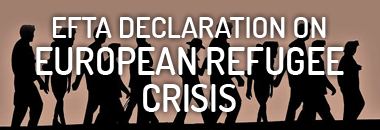EUROPEAN FAMILY THERAPY ASSOCIATION
CONNECTING FAMILY THERAPISTS AND TRAINERS
Paul Riley
Family therapist at Philadelphia Child Guidance Clinic

George Saba: Not very popular, one of the best family therapists I met at the Philadelphia Child Guidance Clinic. Although not one of my assigned supervisors, I quickly sought out to learn whatever I could from him, given the respect he held among colleagues and the families for whom he cared. Paul had been part of an innovative training program that Sal Minuchin and Jay Haley developed to train community members as family therapists. The two professionals went into the communities that PCGC served and recruited people not involved in the mental health field and not trained academically in any therapy; they asked them to participate in a training program. They believed that Structural Family Therapy was eminently learnable and did not require higher education or particular training at a Masters or Doctoral level. When I was in Philly, a number of these trainees had been hired on as staff and in my estimation were more effective than many of those who were “professionally trained”. They brought concordance racially/ethnically and linguistically to many of the families we cared for; they understood the contexts of the families’ lives as it was their contexts. They were also not afraid to speak the truth, when needed.
Paul told me that he had been trained by Braulio Montalvo. He said Braulio knew that he was a “pool shark” in the community (i.e., an expert at billiards). Braulio took him to a pool hall, and placed three balls on the table, saying here are two parents and a child. Then he moved the child’s ball close to one parent’s ball. He took a fourth ball, gave it to Paul and said use this to create some separation, not too much, but just a bit. And then Braulio set up several scenarios as he taught Paul about enactment, triangulation, stages of therapy, inducing conflict, and boundaries.
He then opened his desk drawer and pulled out a King James Bible, the Torah, the Catholic Bible, the Koran, and a book on Buddhism. He had read them all and knew them deeply. He said whenever he had a family from a particular faith tradition who could benefit from a particular passage he would pull out their scriptures and discuss specific passages. And for those who were using faith as a way to stall change, he would always know where in their scriptures was a passage to challenge them.
Braulio also pulled out a folder that was labeled “funerals”. “I was a bit shocked – Paul told me – looking through it: a collection of funeral homes, flower arrangements, caskets, cremation and end of life documents. I asked what did he have this for. He said when a family was reluctant to change and they were lost in patterns that would lead to increasing suffering, even death, early o he would bring this out and challenge them: “This is where you or your loved one are headed. Since you don’t want to follow any of my ideas, let’s just get this planning over with now.” Needless to say, others In the clinic attested how this and others of his interventions had an incredible effectiveness. His waiting list was as long as Minuchin’s, I b
Paul worked at a school playground and had a special ability to connect with children and the community. He had other jobs to make ends meet financially (e.g., limousine driver, pool player). He joined the first IFC class (Institute of Family Counselling). On day one, Minuchin said “You are all family therapists.” And then they received intensive live supervision and immediate video review and discussion of every one of their family therapy sessions by Minuchin, Jay Haley, and/or Braulio Montalvo. Paul was so skilled that he immediately was invited to join the permanent staff of the PCGC. Paul was one of the most respected therapists at the clinic and one of the first Black family therapists in the country.
When he could afford a 35 mm camera, he became an avid photographer, and his compelling pictures covered the walls of the clinic; each one a work of art that revealed both the beauty of his community and the results of systemic racism on its environment. Families would see the photos on the wall and resonate immediately with the life he and they deeply knew; those of us who were white saw that stereotypes and extremes of the Black community were dangerously inaccurate (e.g., the tragedy of poverty; or look how happy poor kids can be). The field was robbed of his expertise with an untimely death while still at PCGC,



